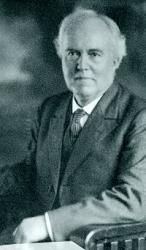Planning worship?
Check out our sister site, ZeteoSearch.org,
for 20+ additional resources related to your search.
- |
User Links
Search Results
The Master Is Calling
Author: Geo. H. Babcock Appears in 2 hymnals First Line: What dost thou here? Refrain First Line: Arise, the Master is calling thee Used With Tune: [What dost thou here?]
The Master Is Calling
[What dost thou here?]
Appears in 1 hymnal Composer and/or Arranger: E. S. Lorenz Incipit: 53212 16551 51325 Used With Text: The Master Is Calling
[What dost thou here?]
The Master Is Calling
Author: Geo. H. Babcock Hymnal: Heavenly Carols #16 (1878) First Line: What dost thou here? Refrain First Line: Arise, the Master is calling thee Languages: English Tune Title: [What dost thou here?]
The Master Is Calling
Arise! the Master is calling thee!
Author: Geo. H. Babcock Hymnal: Jasper and Gold #47 (1877) First Line: What dost thou here? Languages: English
Arise! the Master is calling thee!
Edmund S. Lorenz

1854 - 1942 Person Name: E. S. Lorenz Composer of "[What dost thou here?]" in Heavenly Carols Pseudonymns: John D. Cresswell, L. S. Edwards, E. D. Mund,
====================
Lorenz, Edmund Simon. (North Lawrence, Stark County, Ohio, July 13, 1854--July 10, 1942, Dayton, Ohio). Son of Edward Lorenz, a German-born shoemaker who turned preacher, served German immigrants in northwestern Ohio, and was editor of the church paper, Froehliche Botschafter, 1894-1900.
Edmund graduated from Toledo High School in 1870, taught German, and was made a school principal at a salary of $20 per week. At age 19, he moved to Dayton to become the music editor for the United Brethren Publishing House. He graduated from Otterbein College (B.A.) in 1880, studied at Union Biblical Seminary, 1878-1881, then went to Yale Divinity School where he graduated (B.D.) in 1883. He then spent a year studying theology in Leipzig, Germany.
He was ordained by the Miami [Ohio] Conference of the United Brethren in Christ in 1877. The following year, he married Florence Kumler, with whom he had five children. Upon his return to the United States, he served as pastor of the High Street United Brethren Church in Dayton, 1884-1886, and then as president of Lebanon Valley College, 1887-1889.
Ill health led him to resign his presidency. In 1890 he founded the Lorenz Publishing Company of Dayton, to which he devoted the remainder of his life. For their catalog, he wrote hymns, and composed many gospel songs, anthems, and cantatas, occasionally using pseudonyms such as E.D. Mund, Anna Chichester, and G.M. Dodge. He edited three of the Lorenz choir magazines, The Choir Leader, The Choir Herald, and Kirchenchor. Prominent among the many song-books and hymnals which he compiled and edited were those for his church: Hymns for the Sanctuary and Social Worship (1874), Pilgerlieder (1878), Songs of Grace (1879), The Otterbein Hymnal (1890), and The Church Hymnal (1934).
For pastors and church musicians, he wrote several books stressing hymnody: Practical Church Music (1909), Church Music (1923), Music in Work and Worship (1925), and The Singing Church (1938). In 1936, Otterbein College awarded him the honorary D.Mus. degree and Lebanon Valley College the honorary LL.D. degree.
--Information from granddaughter Ellen Jane Lorenz Porter, DNAH Archives
Edmund S. Lorenz


 My Starred Hymns
My Starred Hymns

